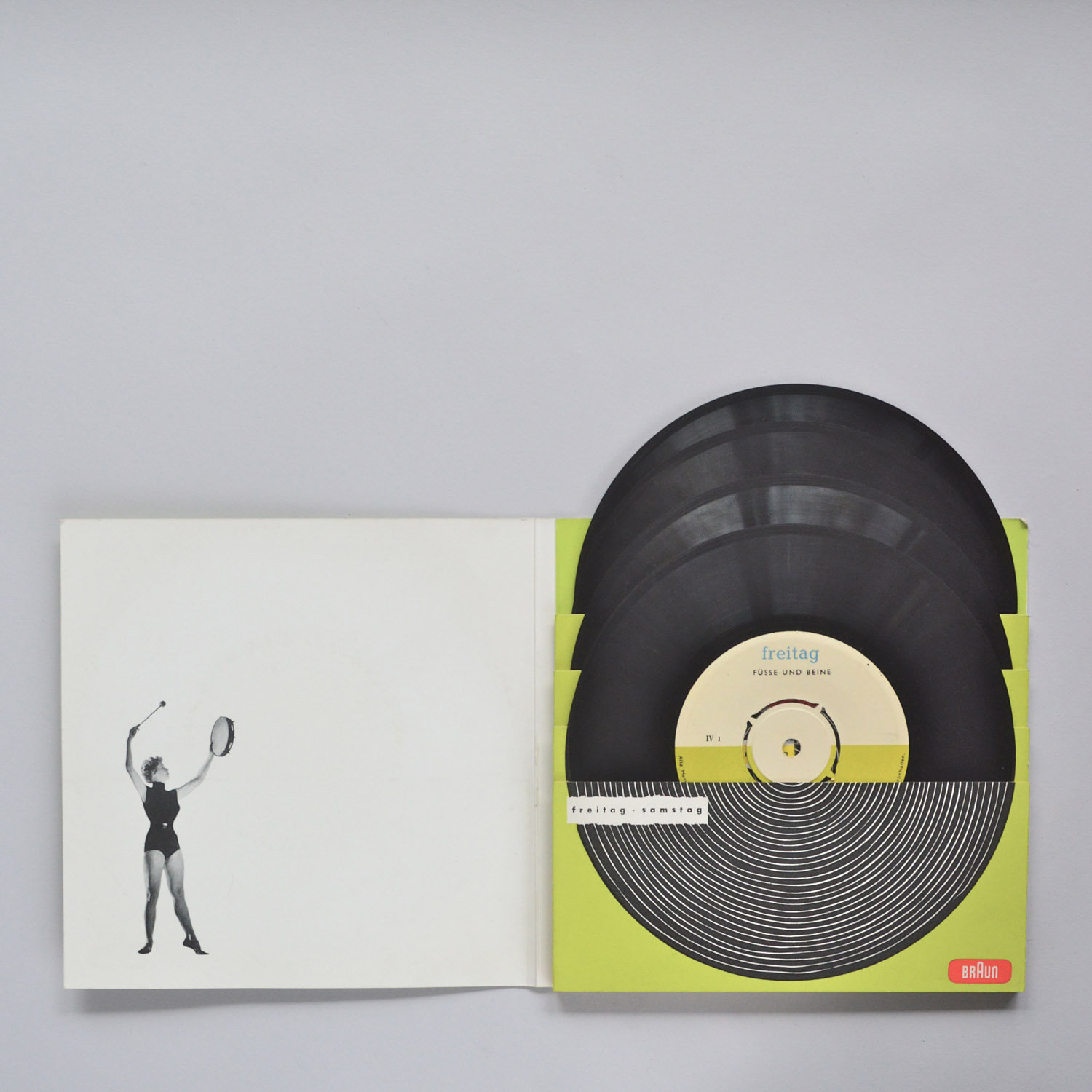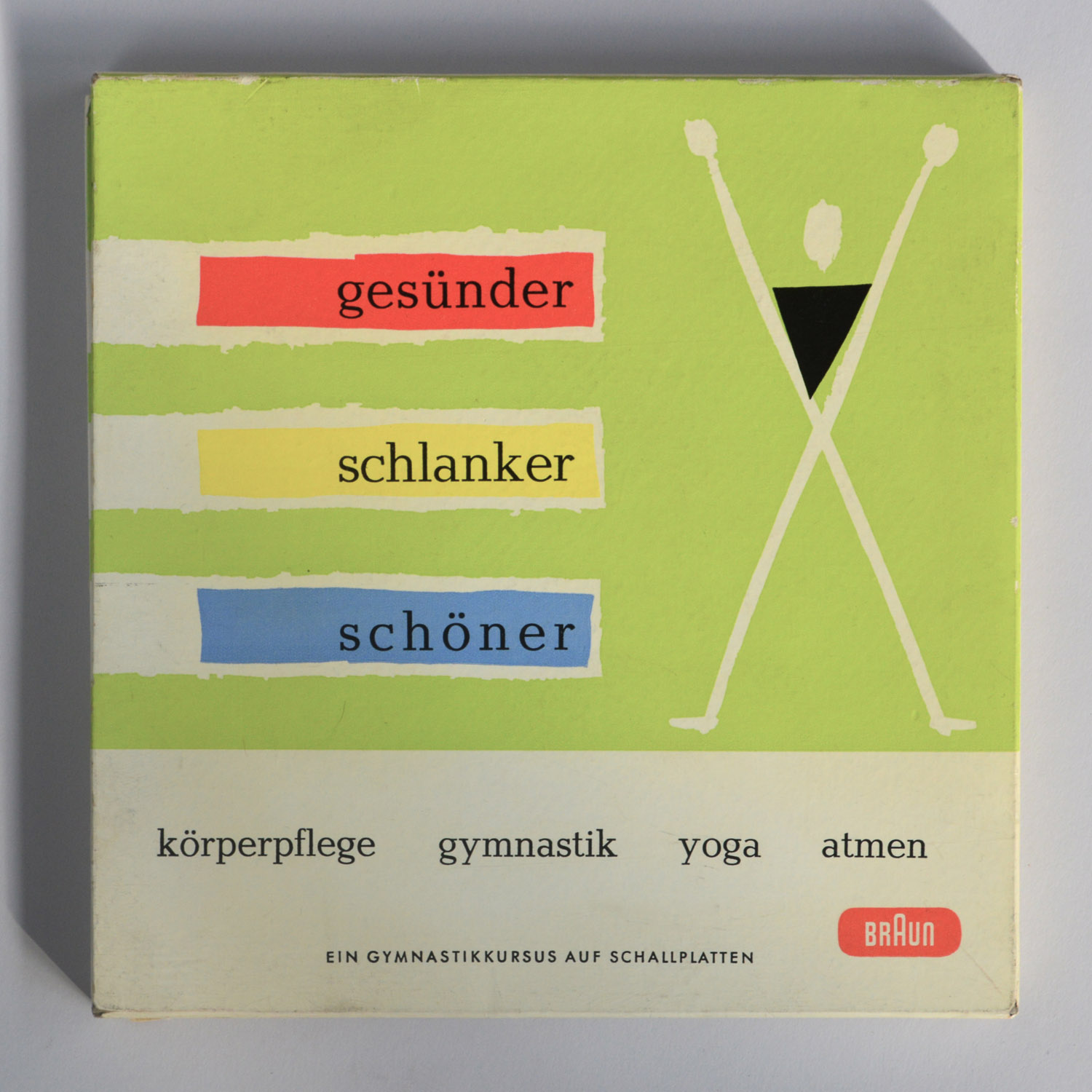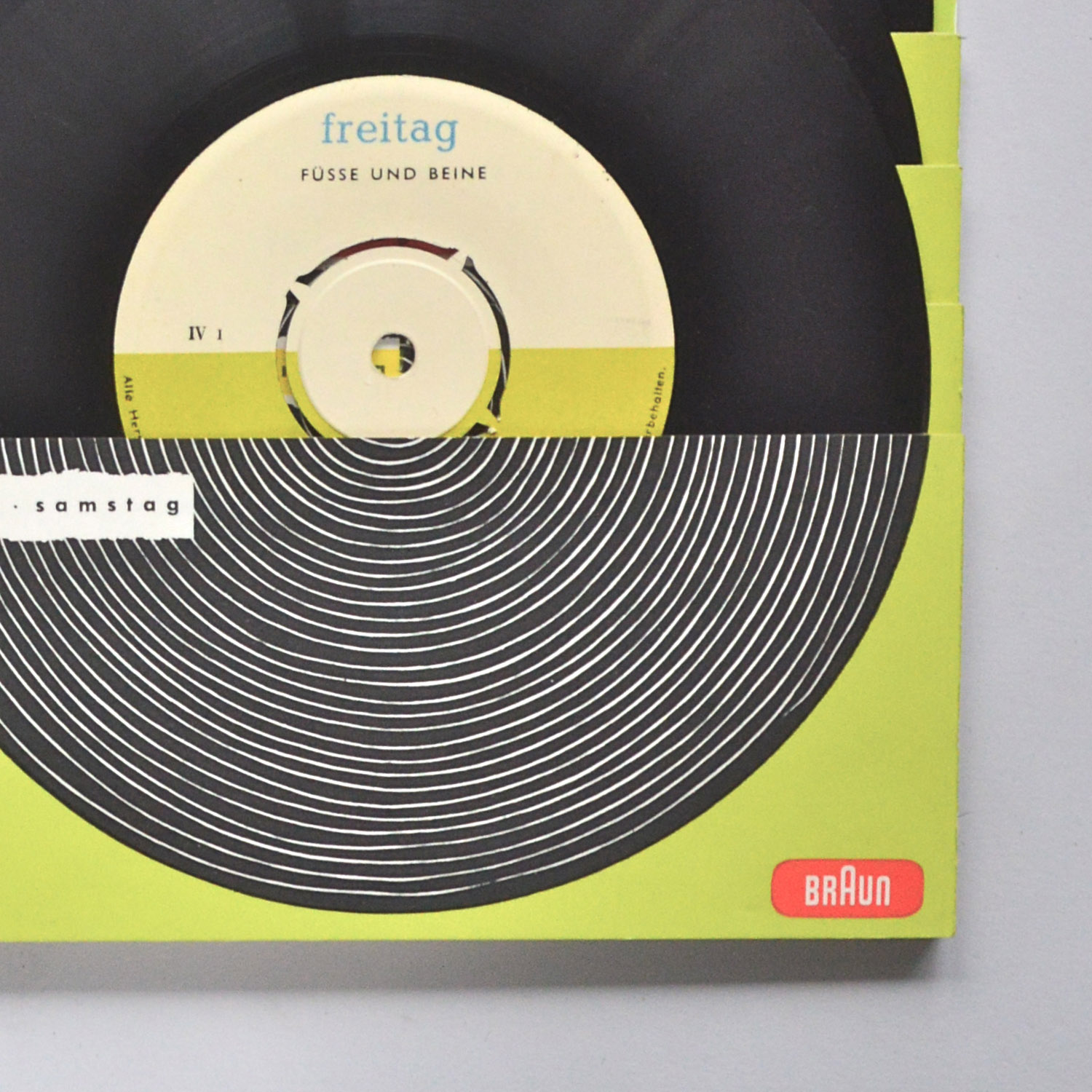


A set of 5 singles, one for each day of the week, instructing exercise in a variety of forms - gymnastics, yoga and breathing - and providing advice on personal hygiene. Within the Braun Company great emphasis was placed on the connection between physical and spiritual well-being. From the mid-'50s, this was promoted through workers' exercise programmes. In the early '70s a workers health building, designed by Dieter Rams, was constructed on the Kronberg campus to house a doctor's surgery and sauna.
Prior to the association of physical fitness with leisure time that developed in the 1960s, exercise was viewed as a matter of medical health. Similarly, cooking equipment was viewed, and marketed, largely on a nutritional basis, whilst shaving, clearly of an aesthetic rather than medical concern, was nevertheless was marketed as a matter of hygiene.


